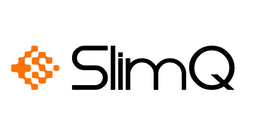USB-A vs. USB-C Chargers Navigating the Evolution of Power Delivery
Posted by JAKEY ZHANG

As technology continues to advance, the landscape of charging ports and cables has undergone a significant transformation. Two prominent players in this evolution are USB-A and USB-C chargers. This article explores the key differences between these two technologies, shedding light on their respective advantages and helping users make informed choices in the world of power delivery.
Form and Function:
USB-A, the familiar rectangular port that has been a standard for years, has served as a ubiquitous connection for various devices. On the other hand, USB-C represents a more modern, reversible design that can be plugged in either way, eliminating the frustration of figuring out the correct orientation.
Speed and Efficiency:
USB-C stands out in terms of data transfer speeds and power delivery capabilities. USB-C supports faster charging and data transfer rates compared to USB-A. With USB-C, users can experience quicker device charging and enjoy the benefits of higher data transfer speeds for tasks like file syncing and backups.
Versatility and Universality:
USB-C is gaining popularity for its versatility. It is not only a charging cable but also a multi-functional interface that supports various protocols, including HDMI, DisplayPort, and Thunderbolt. USB-A, while reliable, lacks the universality and adaptability that USB-C brings to the table.
Device Compatibility:
USB-A remains prevalent in many devices, especially older models, making it a familiar and widely compatible choice. However, as technology evolves, an increasing number of devices are adopting USB-C as the standard. The compatibility of USB-C across a diverse range of devices positions it as a forward-looking option for users investing in the latest technology.
Future-Proofing Investments:
Choosing between USB-A and USB-C involves considering the longevity of one's devices and accessories. As the tech industry leans towards USB-C as the future standard, investing in USB-C-compatible devices ensures that users stay ahead of the curve and are ready for the next generation of gadgets and peripherals.
